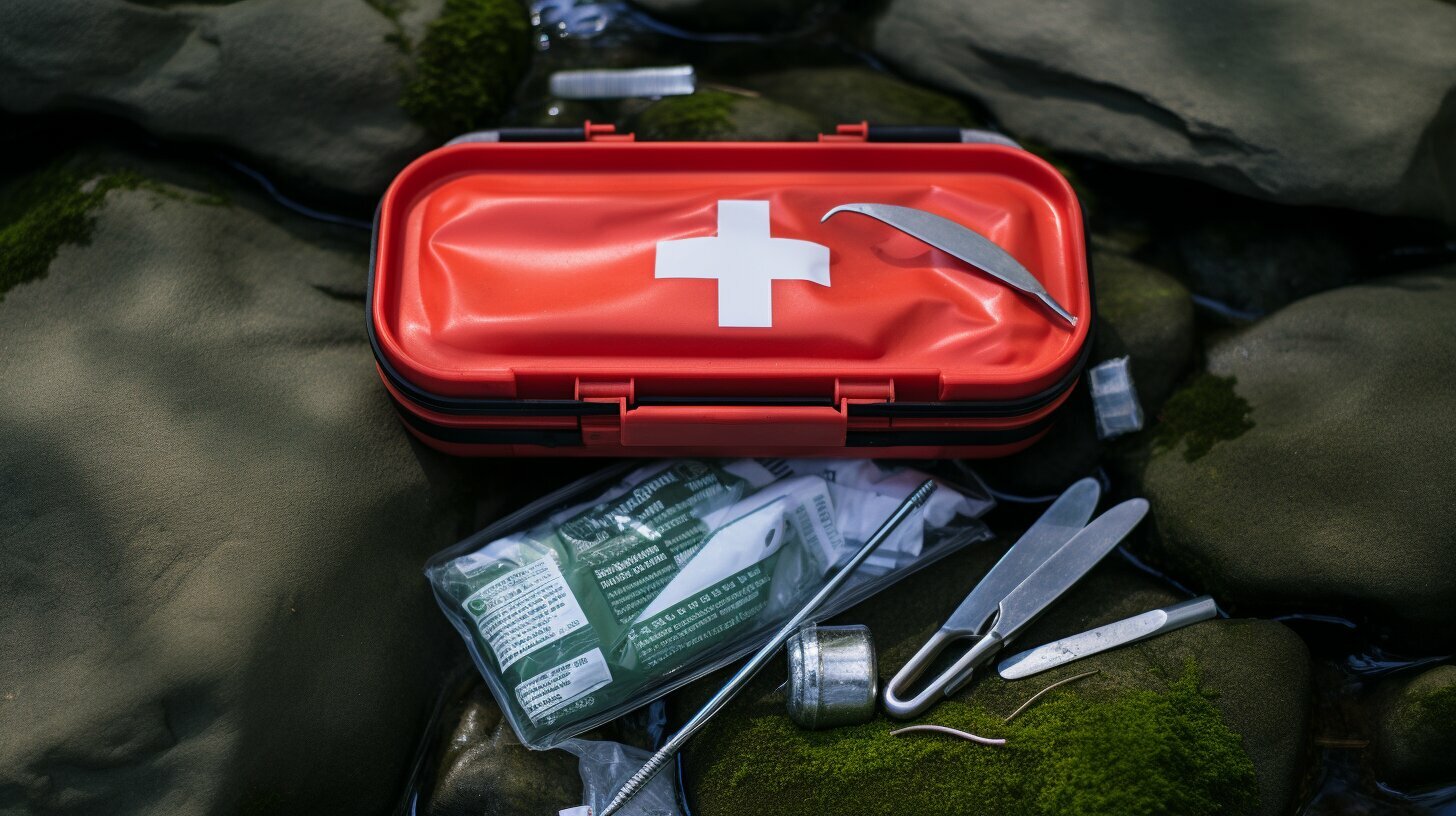Hiking in the UK can be an exhilarating experience, but it’s important to be prepared for any potential injuries or emergencies that may arise. Building a comprehensive first aid kit tailored specifically for UK hikers is crucial for ensuring your safety on the trails.
When venturing into the great outdoors, having a well-stocked first aid kit should be at the top of your packing list. It’s your lifeline in case of accidents or unexpected health issues during your hikes. From minor cuts and sprains to insect bites and sunburns, a first aid kit packed with essentials will give you peace of mind and the ability to take care of yourself and others.
In this ultimate guide, we will walk you through the process of building a first aid kit specifically designed for UK hikers. You’ll learn about the essential items that should be included, additional supplies for longer hikes, environmental considerations, and packing tips to ensure easy access in case of emergencies.
Whether you’re a seasoned hiker or just starting your outdoor adventures, this guide will provide you with the knowledge and tools to stay safe and prepared on the trails in the UK.
First Aid Kit Essentials for UK Hikers
When building a first aid kit for your UK hiking adventures, it’s important to include a range of essential items that can help you address common injuries and health issues that may arise on the trails. Being prepared with the right supplies can make all the difference in providing immediate care and ensuring your safety.
Here is a list of essential items for a hiking first aid kit:
- Adhesive bandages: to cover and protect minor cuts and blisters.
- Compression bandage: for providing support and stabilization for sprains and strains.
- Butterfly bandages: to close and secure deep cuts.
- Irrigation syringe: to clean wounds and remove debris.
- Gauze: for covering larger wounds or as a dressing for burns.
- Antibacterial ointment: to prevent infection.
- Antiseptic wipes: for cleaning the skin before applying dressings.
- Pain relievers (such as ibuprofen and paracetamol): to relieve pain and reduce inflammation.
- Antidiarrheal pills: for treating stomach issues that may occur during hikes.
- Eye drops: for soothing dry or irritated eyes.
In addition to these essentials, it’s also important to include tools and accessories that can come in handy during emergencies. These items can help you administer first aid more effectively and maintain personal hygiene:
Tools and accessories for a UK hiking first aid kit:
- Tweezers: for removing splinters and ticks.
- Latex gloves: to protect yourself and prevent cross-contamination.
- Hand sanitizer: for maintaining hand hygiene when soap and water are not available.
- Water treatment tablets: for purifying water from natural sources.
- Sunscreen: to protect your skin from harmful UV rays.
- Lip balm: to prevent chapped lips in dry conditions.
- Bug repellent: to ward off mosquitoes and other insects.
Remember, the contents of your first aid kit will depend on the duration and location of your hike. For longer hikes, consider adding additional supplies such as rolled gauze, roller bandages, cleansing pads, blood-stopping gauze, liquid bandages, splints, rehydration tablets, antibiotics, multitool, thermometer, blunt-tipped scissors, sewing needle, CPR mask, duct tape, pen, notebook, and headlamp. These items can help you address more advanced wound care, hydration, and other potential health issues that may arise during extended periods on the trails.
Lastly, pack your first aid kit in a brightly colored, waterproof, and easily accessible dry sack. This will ensure that your supplies are well-protected from the elements and can be easily located during emergencies. Being well-prepared with a well-stocked first aid kit can give you peace of mind as you embark on your UK hiking adventures.
| Essential Items for Hiking First Aid Kit | Tools and Accessories for Hiking First Aid Kit |
|---|---|
| Adhesive bandages | Tweezers |
| Compression bandage | Latex gloves |
| Butterfly bandages | Hand sanitizer |
| Irrigation syringe | Water treatment tablets |
| Gauze | Sunscreen |
| Antibacterial ointment | Lip balm |
| Antiseptic wipes | Bug repellent |
| Pain relievers | |
| Antidiarrheal pills | |
| Eye drops |
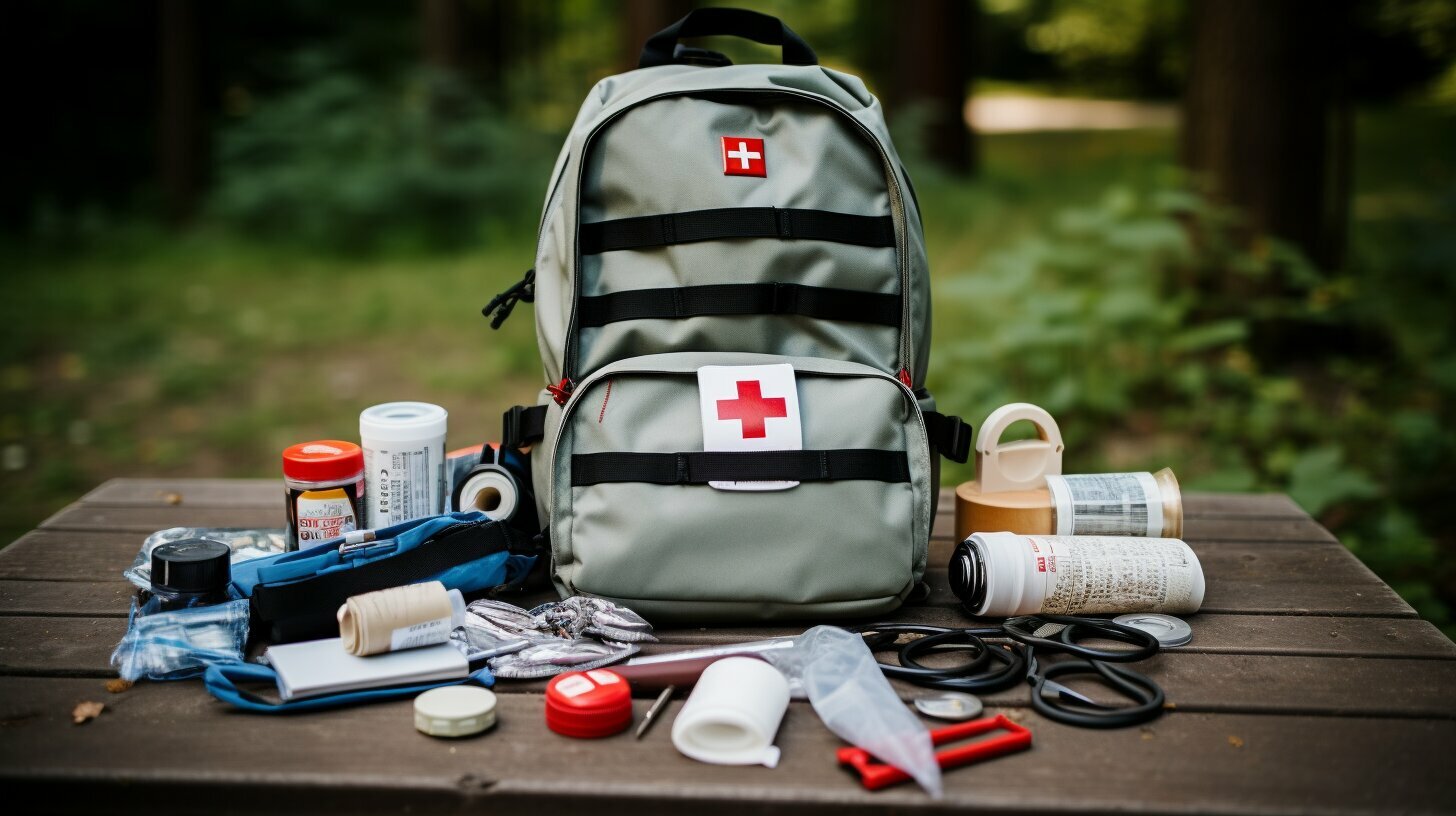
Some of the basic first aid supplies that should be included in your UK hiking first aid kit are adhesive bandages, compression bandages, butterfly bandages, an irrigation syringe, gauze, antibacterial ointment, antiseptic wipes, and pain relievers like ibuprofen and paracetamol. These supplies are essential for treating minor cuts, wounds, and common ailments that may occur during your hikes.
Adhesive bandages, also known as plasters or sticking plasters, are used to cover small cuts and wounds. They provide protection and help in the healing process. Compression bandages are used to apply pressure to a wound to control bleeding and reduce swelling. Butterfly bandages are used to close small cuts or lacerations that may require stitches.
| First Aid Supply | Description |
|---|---|
| Adhesive bandages | Used to cover small cuts and wounds |
| Compression bandages | Used to apply pressure to control bleeding and reduce swelling |
| Butterfly bandages | Used to close small cuts or lacerations |
| Irrigation syringe | Used to clean wounds with saline solution or clean water |
| Gauze | Used for covering larger wounds or as a dressing |
| Antibacterial ointment | Used to prevent infection in wounds |
| Antiseptic wipes | Used to clean the surrounding area of a wound |
| Pain relievers | Used to alleviate pain and reduce inflammation |
| Antidiarrheal pills | Used to treat diarrhea and dehydration |
These supplies, along with other essential tools and accessories like tweezers, latex gloves, hand sanitizer, and antiseptic wipes, will help you address minor injuries and maintain hygiene during your hiking adventures. Remember to also include items such as water treatment tablets, sunscreen, lip balm, and bug repellent to protect yourself from outdoor hazards.
Having a well-stocked first aid kit is crucial for your safety and well-being while hiking in the UK. By preparing your kit with the necessary supplies, you can be better equipped to handle any minor emergencies or health issues that may arise during your outdoor excursions.

If you’re planning a longer hike, consider adding additional supplies to your first aid kit such as rolled gauze, roller bandages, cleansing pads, blood-stopping gauze, liquid bandages, splints, rehydration tablets, antibiotics, a multitool, and a thermometer. These items can be crucial in treating more complex injuries and addressing health issues that may arise during extended periods on the trails.
Rolled gauze and roller bandages are essential for securing dressings and providing support to injured limbs. Cleansing pads and blood-stopping gauze are important for cleaning and treating wounds to prevent infection and stop bleeding. Liquid bandages can be used to seal minor cuts and abrasions, forming a protective barrier that allows the wound to heal. Splints are useful for stabilizing broken or sprained bones, while rehydration tablets can help replenish electrolytes during strenuous hikes.
Antibiotics are a valuable addition to a first aid kit for longer hikes, as they can be used to treat infections that may not heal with basic wound care. A multitool is a versatile tool that can come in handy in various situations, from cutting materials to repairing gear. Meanwhile, a thermometer can help monitor and identify potential signs of illness or heat exhaustion.
| Item | Use |
|---|---|
| Rolled gauze | Securing dressings, providing support |
| Roller bandages | Securing dressings, providing support |
| Cleansing pads | Cleaning wounds |
| Blood-stopping gauze | Stopping bleeding |
| Liquid bandages | Sealing cuts and abrasions |
| Splints | Stabilizing broken or sprained bones |
| Rehydration tablets | Replenishing electrolytes |
| Antibiotics | Treating infections |
| Multitool | Versatile tool for cutting and repairing |
| Thermometer | Monitoring body temperature |
By including these additional supplies in your first aid kit for longer hikes, you can be better prepared to handle emergencies and ensure the safety of yourself and your hiking companions. Remember to pack them in a waterproof and brightly colored dry sack for easy access and protection from the elements.

In addition to medical supplies, it’s important to include essential tools and accessories in your first aid kit. These items can help with wound care, personal hygiene, and protection against common outdoor hazards. Here are some key tools and accessories to consider:
- Tweezers: Useful for removing splinters, ticks, and other small objects from the skin.
- Latex gloves: Ensure proper hygiene and minimize the risk of infection when administering first aid.
- Hand sanitizer: Essential for keeping your hands clean when soap and water are not readily available.
- Water treatment tablets: Purify water from natural sources to prevent waterborne illnesses.
- Sunscreen: Protect your skin from harmful UV rays, especially during long hikes in sunny weather.
- Lip balm: Prevent chapped lips and protect them from sunburn and windburn.
- Bug repellent: Ward off mosquitoes, ticks, and other insects to reduce the risk of bites and diseases they may carry.
These tools and accessories complement the medical supplies in your first aid kit, ensuring you are well-prepared for various situations that may arise during your hiking adventures. Remember to regularly check and replenish your supplies to keep your kit up to date.
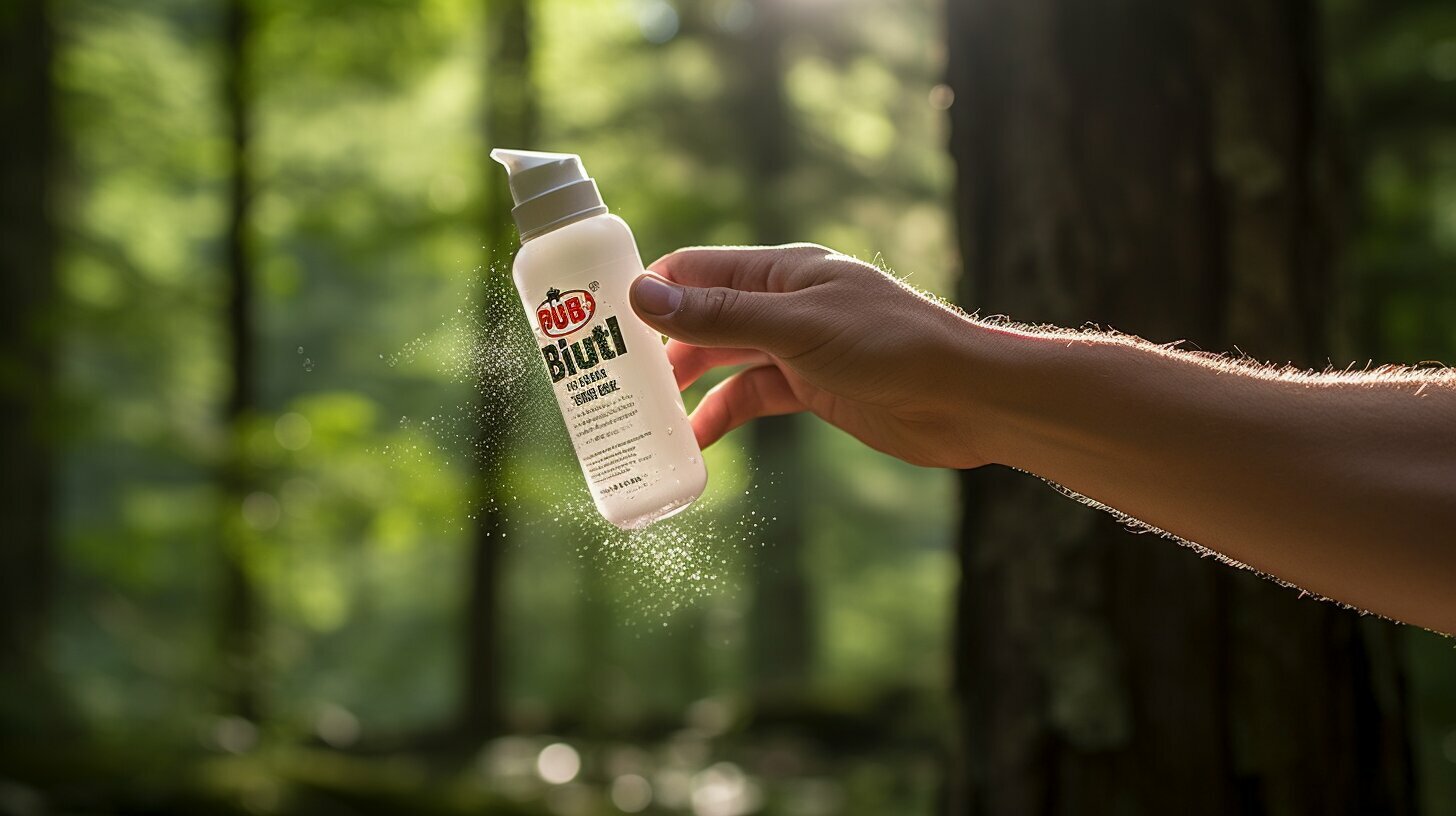
| Tool/Accessory | Purpose |
|---|---|
| Tweezers | Remove splinters, ticks, and other small objects from the skin. |
| Latex gloves | Ensure hygiene and minimize the risk of infection during first aid administration. |
| Hand sanitizer | Keep hands clean when soap and water are not readily available. |
| Water treatment tablets | Purify water from natural sources to prevent waterborne illnesses. |
| Sunscreen | Protect skin from harmful UV rays during outdoor activities. |
| Lip balm | Prevent chapped lips and protect against sunburn and windburn. |
| Bug repellent | Ward off insects, such as mosquitoes and ticks, to reduce the risk of bites and diseases. |
Environmental Considerations
Depending on the specific environment you’ll be hiking in, there are certain additional items you may need to pack in your first aid kit to ensure your safety and well-being. For jungle treks, it is important to include antimalaria pills to protect against mosquito-borne diseases. Additionally, a tropical-strength repellent should be included to ward off insects and prevent bites or stings. These items are crucial for maintaining your health in tropical climates.
In cold climates, a heat-reflecting emergency blanket is essential to prevent hypothermia and maintain body temperature. This lightweight and compact blanket reflects heat back to the body, providing insulation and warmth. It is important to include this item in your first aid kit to protect yourself from extreme cold and adverse weather conditions.
For high-altitude hikes, altitude sickness medication is a must. These medications help alleviate the symptoms of altitude sickness, such as dizziness, nausea, and headaches. It is important to consult with a healthcare professional before starting your hike and discuss the appropriate medication dosage based on your specific needs. Including altitude sickness medication in your first aid kit can ensure a safer and more enjoyable hiking experience at higher altitudes.

| Jungle Treks | Cold Climates | High Altitudes |
|---|---|---|
| Antimalaria Pills | Heat-Reflecting Emergency Blanket | Altitude Sickness Medication |
| Tropical-Strength Repellent |
Antimalaria Pills
- Protect against mosquito-borne diseases
- Consult a healthcare professional for appropriate dosage
Heat-Reflecting Emergency Blanket
- Prevents hypothermia in cold climates
- Reflects heat back to the body for insulation
Altitude Sickness Medication
- Alleviates symptoms of altitude sickness
- Consult a healthcare professional for appropriate medication
Pack and Organization Tips
Properly packing and organizing your first aid kit is essential for ensuring that you can easily access the necessary supplies when needed. Consider using a waterproof dry sack that is brightly colored to make it easily identifiable. This will not only protect your first aid items from water damage but also make it easier to locate in case of an emergency.
When packing your first aid kit, it’s important to separate and categorize the items based on their function. This will help you quickly find what you need when faced with an injury or emergency. You can use small containers or ziplock bags to group similar items together, such as bandages, ointments, and medications.
If possible, create a list of the contents of your first aid kit and place it inside the kit. This will serve as a reference guide, ensuring that you can easily identify which items are running low and need to be restocked. Additionally, it can be helpful to include a small notebook and pen for keeping track of any notes or observations related to injuries or illnesses.
Lastly, make sure to regularly check and replenish your first aid kit after each hike or adventure. This will ensure that you have an up-to-date and fully stocked kit for your next trip. Remember, a well-organized and well-maintained first aid kit can be a lifesaver in unexpected situations.
| First Aid Kit Packing Tips: |
|---|
| Use a waterproof dry sack |
| Choose a brightly colored sack for easy identification |
| Categorize items based on function |
| Use small containers or ziplock bags to group similar items |
| Create a list of the kit’s contents |
| Include a small notebook and pen for notes |
| Regularly check and replenish the kit |
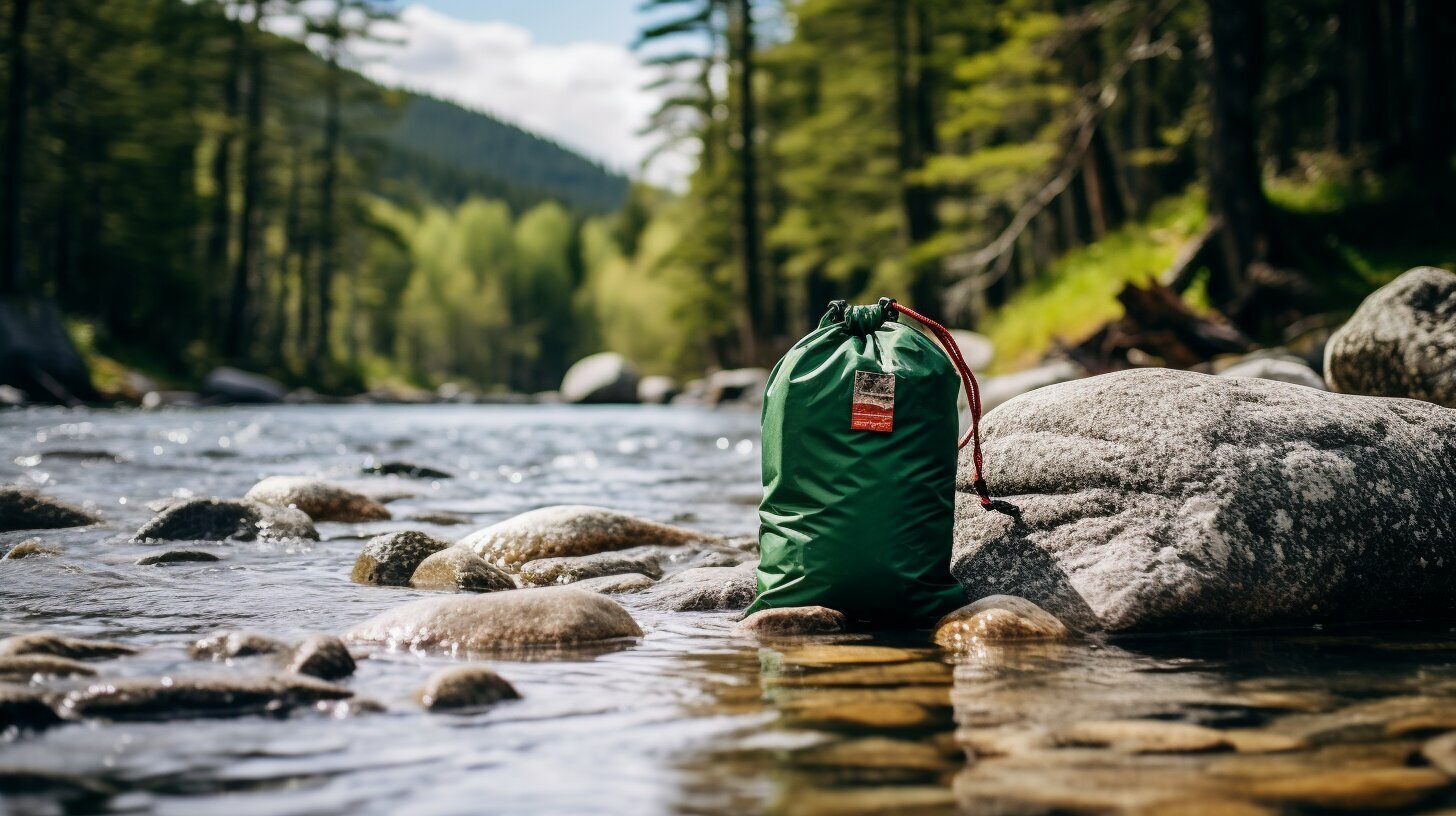
- Adhesive bandages
- Compression bandage
- Butterfly bandages
- Irrigation syringe
- Gauze
- Antibacterial ointment
- Antiseptic wipes
- Pain relievers (such as ibuprofen and paracetamol)
- Antidiarrheal pills
- Eye drops
- Tweezers
- Latex gloves
- Hand sanitizer
- Water treatment tablets
- Sunscreen
- Lip balm
- Bug repellent
Remember to tailor your first aid kit to your specific needs and the type of hikes you are undertaking. Always consider the duration, terrain, and potential risks associated with your hiking adventures. By following these packing and organization tips, you can ensure that your first aid kit is ready for any situation that may arise during your UK hiking trips.
Additional Safety Considerations
Building a first aid kit is just one aspect of being prepared for hiking in the UK. It’s also important to consider other safety measures, such as obtaining first aid training, carrying emergency contact information, and developing an emergency action plan.
First aid training equips you with the knowledge and skills to effectively respond to emergencies on the trail. It teaches you how to assess injuries, administer CPR, and provide immediate care until professional help arrives. By undergoing first aid training, you can confidently handle various situations and potentially save lives.
Carrying emergency contact information is crucial in case of an accident or medical emergency. Include the contact details of emergency services, your emergency contact person, and any relevant medical information. This information should be easily accessible, either on your person or in your first aid kit.
In addition to emergency contact information, developing an emergency action plan can further enhance your safety during hikes. This plan outlines the steps to be taken in different emergency scenarios, including communication protocols, designated meeting points, and evacuation procedures. By having a well-thought-out plan in place, you can respond effectively and efficiently to emergencies.
| Additional Safety Considerations | Important Factors |
|---|---|
| First Aid Training | Learn essential first aid skills to respond effectively to emergencies on the trail. |
| Emergency Contact Information | Carry contact details of emergency services, an emergency contact person, and any relevant medical information. |
| Emergency Action Plan | Create a plan outlining the steps to be taken in different emergency scenarios. |
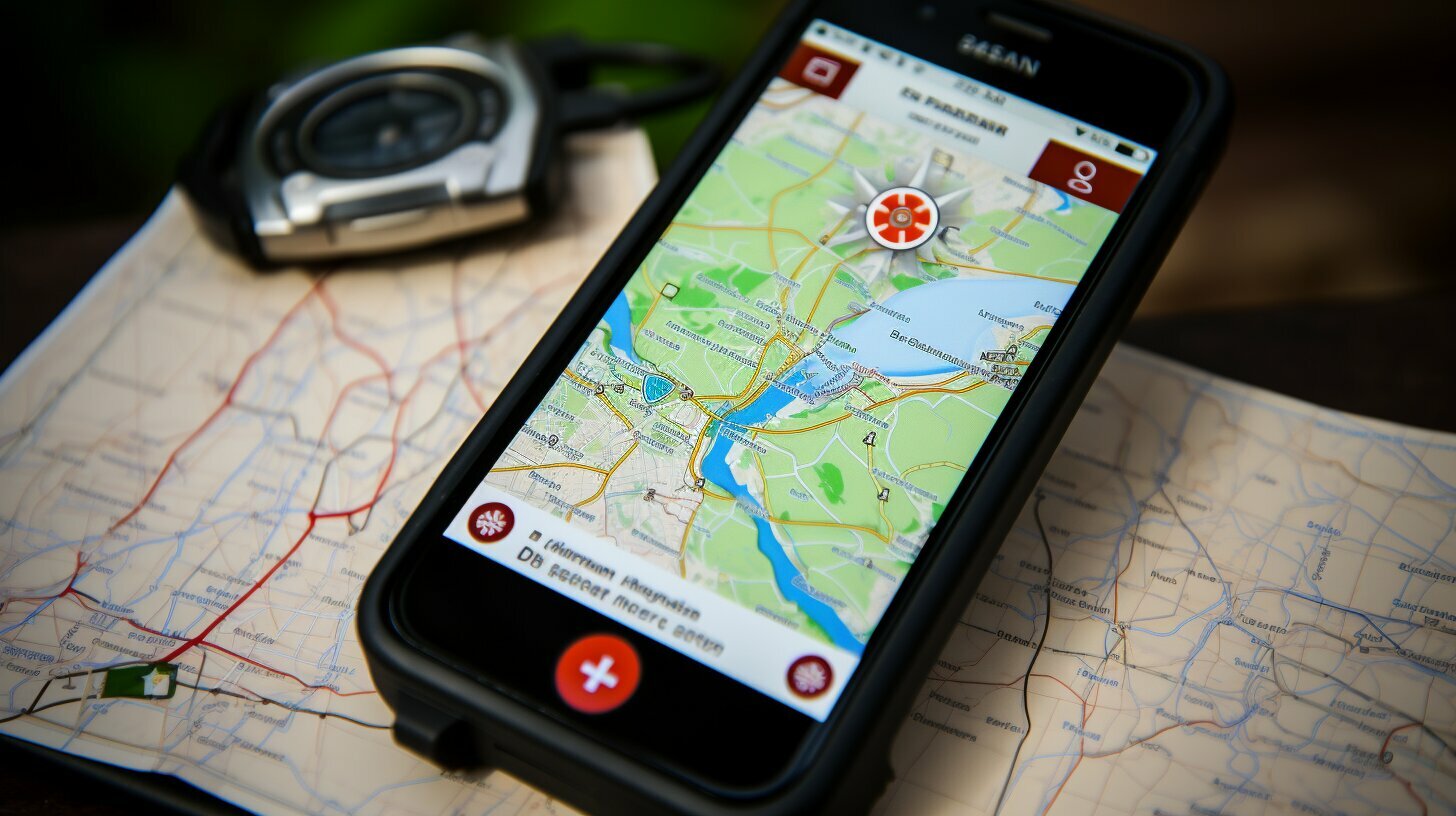
By prioritizing first aid training, emergency contact information, and an emergency action plan, you can enhance your safety while hiking in the UK. These additional safety considerations, coupled with a well-stocked and organized first aid kit, will ensure you are equipped to handle any unforeseen circumstances on the trails.
Conclusion
A well-stocked first aid kit is an essential item for every UK hiker. By following this guide and ensuring you have the necessary supplies, you can be better prepared for any unexpected situations that may arise during your hiking adventures in the UK.
When building your first aid kit, remember to include the essentials such as adhesive bandages, compression bandage, butterfly bandages, irrigation syringe, gauze, antibacterial ointment, antiseptic wipes, pain relievers (such as ibuprofen and paracetamol), antidiarrheal pills, eye drops, tweezers, latex gloves, hand sanitizer, water treatment tablets, sunscreen, lip balm, and bug repellent. These items will help you address common injuries and health issues that may occur while hiking.
For longer hikes, it’s important to add additional supplies like rolled gauze, roller bandages, cleansing pads, blood-stopping gauze, liquid bandages, splints, rehydration tablets, antibiotics, multitool, thermometer, blunt-tipped scissors, sewing needle, CPR mask, duct tape, pen, notebook, and headlamp. These supplies will come in handy for more advanced wound care, emergencies, and unexpected situations.
Furthermore, specific environments may require additional considerations. If you’re going on a jungle trek, be sure to pack antimalaria pills and tropical-strength repellent. For hikes in cold climates, a heat-reflecting emergency blanket is essential. And if you plan to hike in high altitudes, don’t forget to carry altitude sickness medication. Lastly, pack your first aid kit in a brightly colored, waterproof, and easily accessible dry sack to ensure it stays protected and easy to find.
Remember, accidents can happen at any time, so it’s important to be prepared. Invest in a well-stocked first aid kit and take the time to familiarize yourself with its contents. Additionally, consider undergoing first aid training, carrying emergency contact information, and creating an emergency action plan. With these precautions in place, you can hike with more confidence and enjoy your outdoor adventures in the UK to the fullest.
